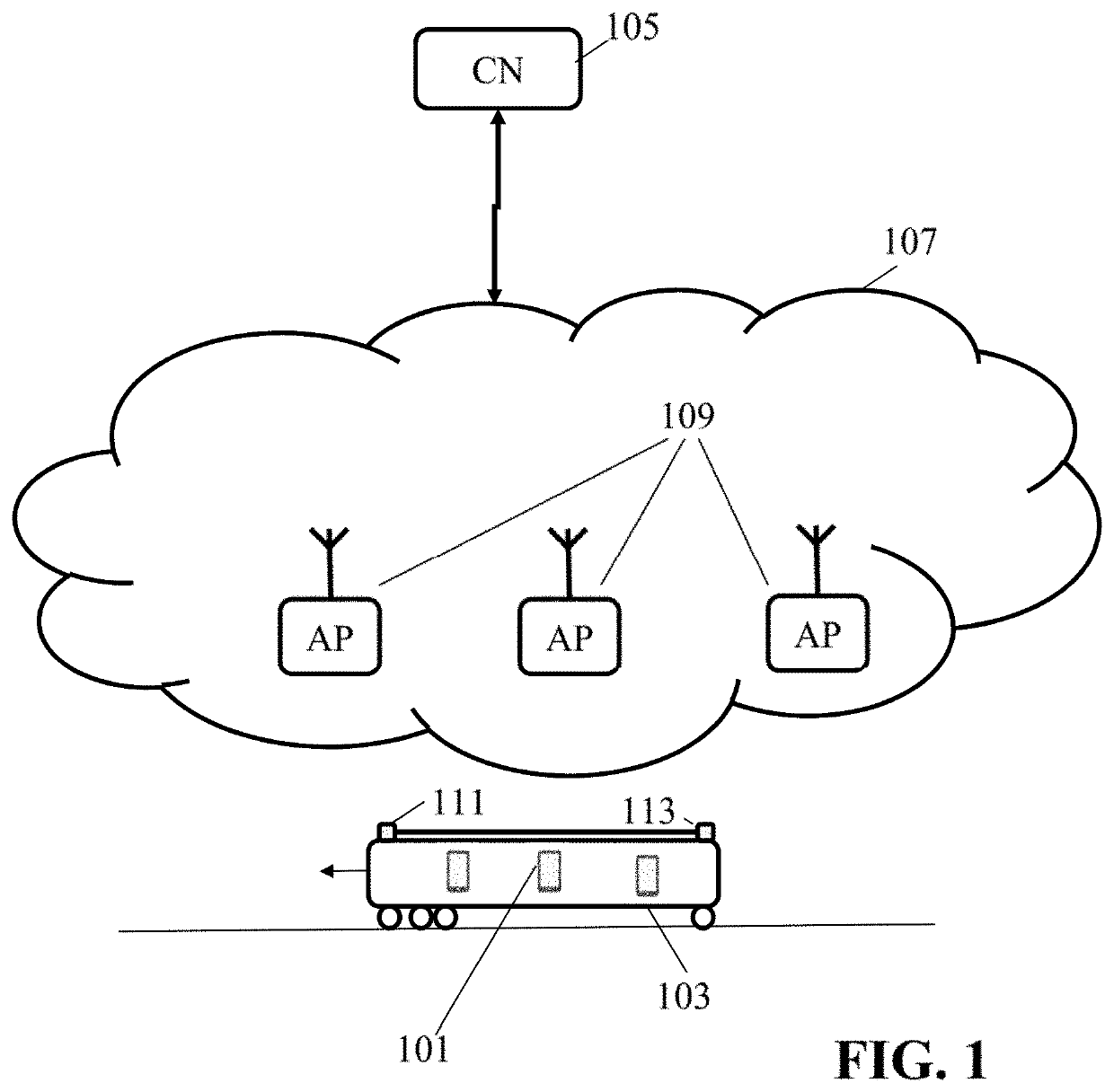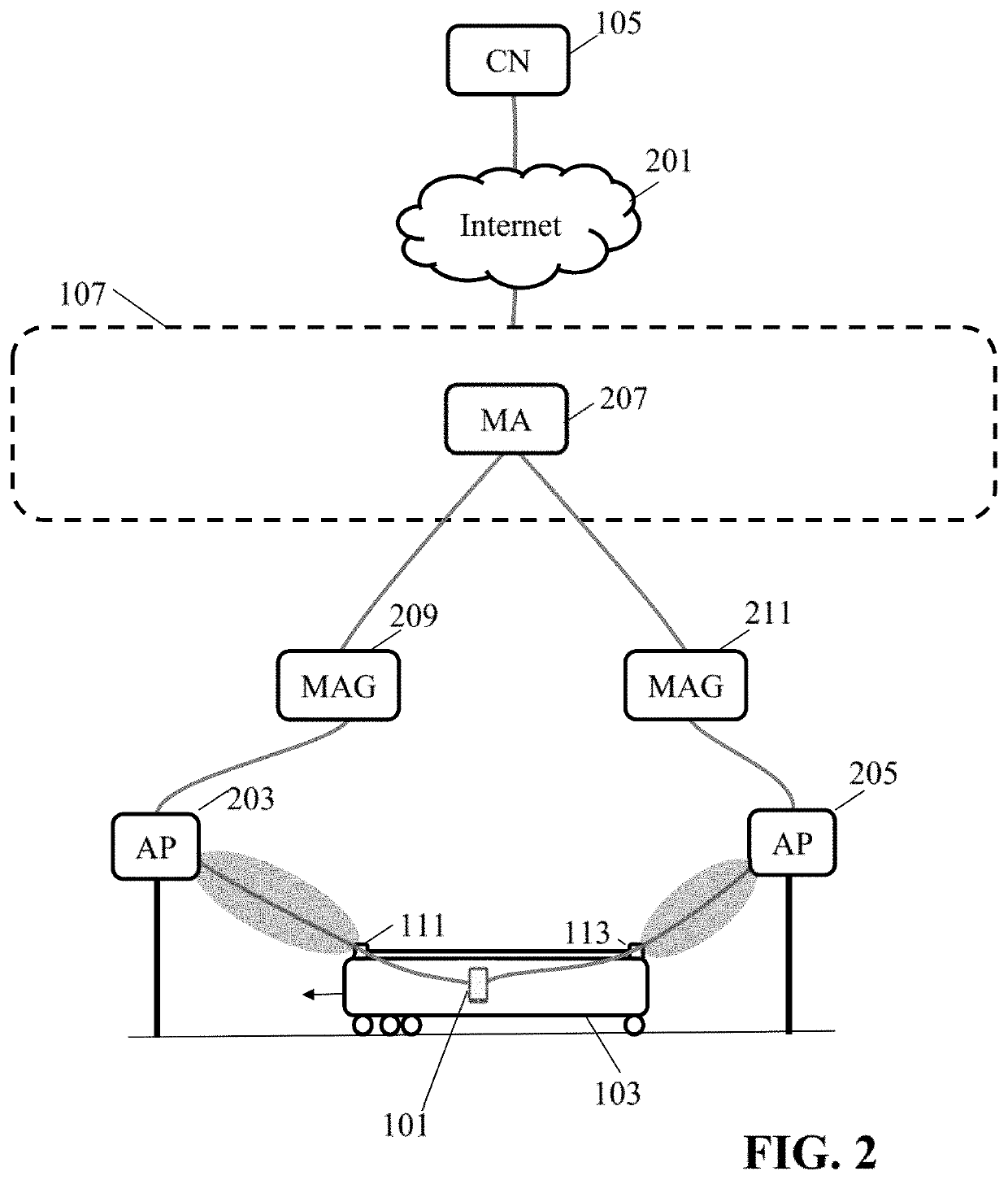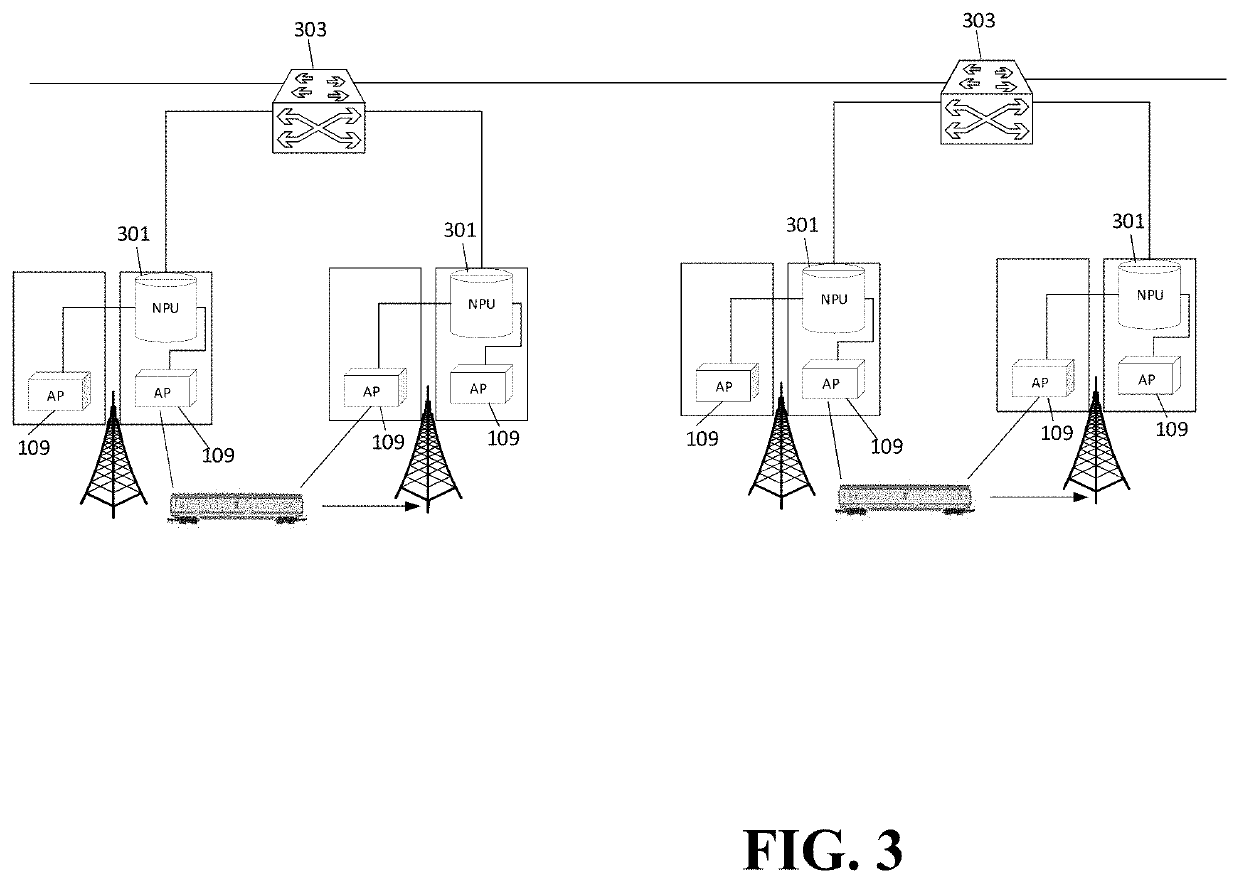Wireless communication to a vehicle
a vehicle and wireless communication technology, applied in connection management, site diversity, diversity/multi-antenna systems, etc., can solve the problems of difficult to provide high data rate support for fast moving vehicles, particularly difficult for a communication infrastructure to support mobility, and the general mobility support tends to be relatively slow
- Summary
- Abstract
- Description
- Claims
- Application Information
AI Technical Summary
Benefits of technology
Problems solved by technology
Method used
Image
Examples
Embodiment Construction
[0054]FIG. 1 illustrates an example of elements of a communication system which supports communication with end nodes that are located in moving vehicles, and in particular in fast moving vehicles such as cars, boats, buses, and trains. The following description will focus on an example in which the vehicle is a train, but it will be appreciated that in other embodiments the end node may be part of other vehicles, such as e.g. a bus driving on a motorway.
[0055]In the example of FIG. 1, a communication session is established between a correspondent node 105 and an end node 101 located in a train / vehicle 103. It will be appreciated that references to an entity being at / with / in / on etc. a vehicle includes any physical or logical form of the vehicle and entity being substantially co-moving, including the entity being positioned on, attached to, embedded within, etc. the vehicle. It will also be appreciated that it does not require the entity to be immovable with respect to the vehicle bu...
PUM
 Login to View More
Login to View More Abstract
Description
Claims
Application Information
 Login to View More
Login to View More - R&D
- Intellectual Property
- Life Sciences
- Materials
- Tech Scout
- Unparalleled Data Quality
- Higher Quality Content
- 60% Fewer Hallucinations
Browse by: Latest US Patents, China's latest patents, Technical Efficacy Thesaurus, Application Domain, Technology Topic, Popular Technical Reports.
© 2025 PatSnap. All rights reserved.Legal|Privacy policy|Modern Slavery Act Transparency Statement|Sitemap|About US| Contact US: help@patsnap.com



